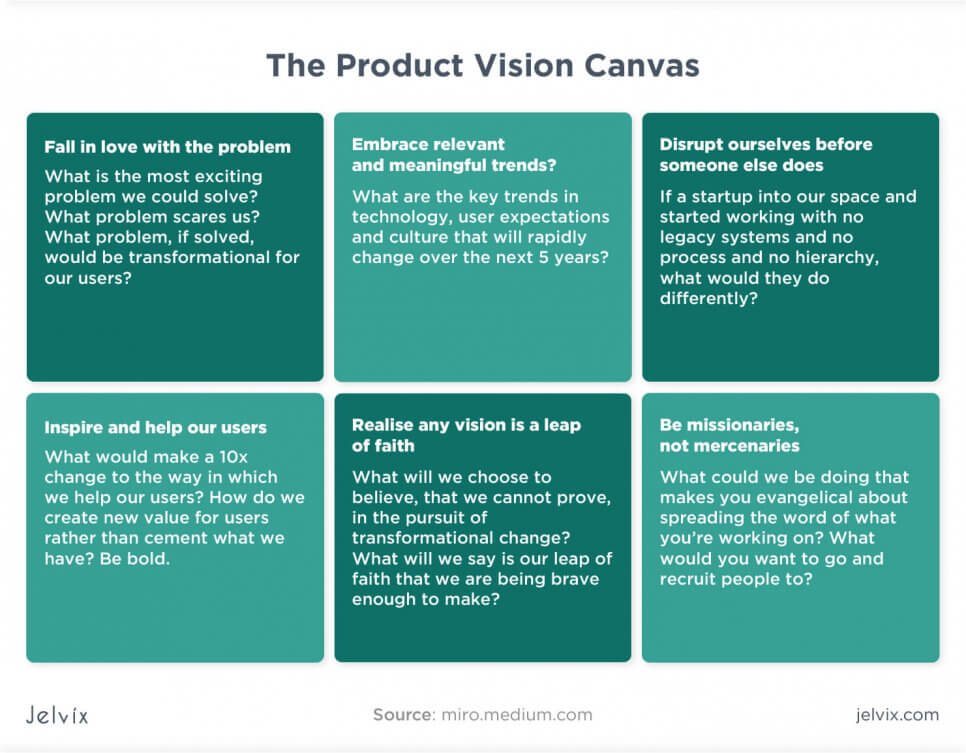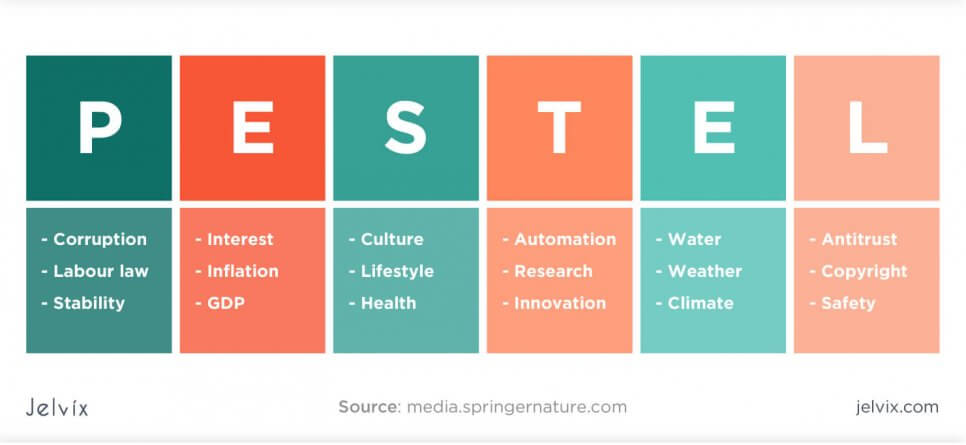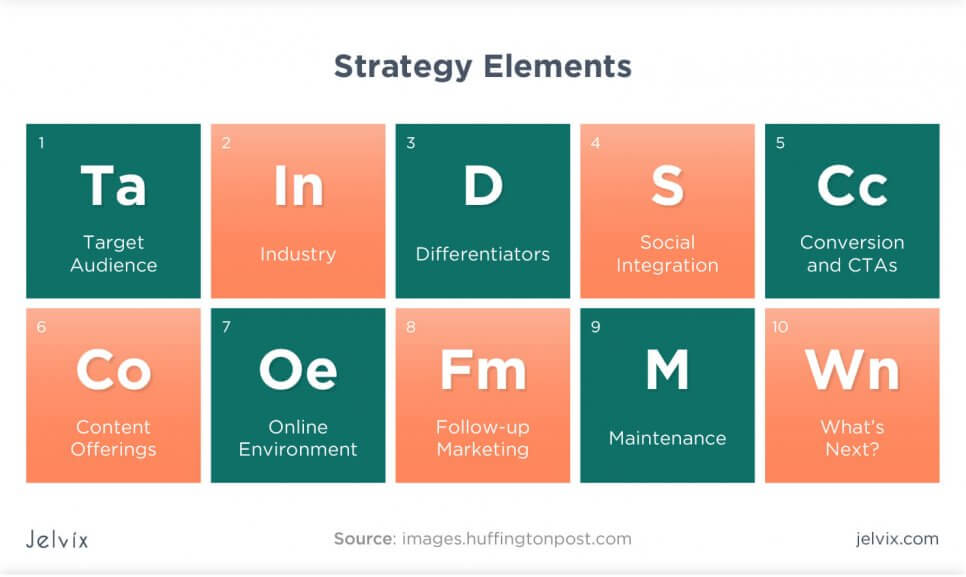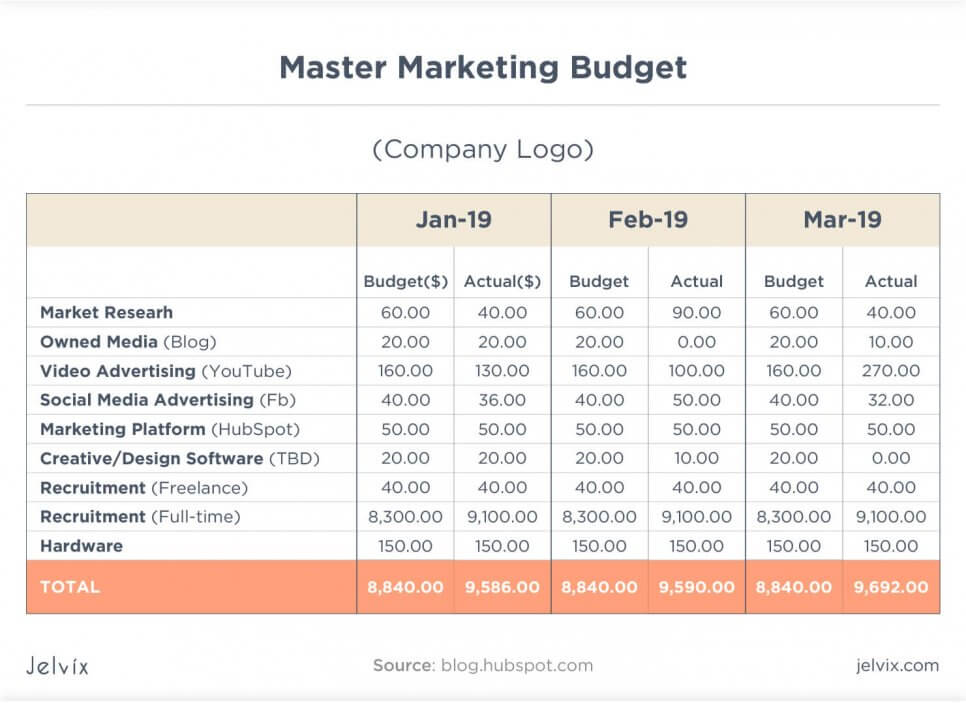When companies roll out applications or websites to the market, they present new products to the audience. As developers, we are naturally more focused on the technical aspect of the process, but we had to acquire marketing expertise to keep in the loop. No matter how perfect the codebase is, all the effort goes wasted if the product is not promoted correctly.
In this article, we’ll walk you through our experience of planning product marketing – the process of rolling out a product to the market and selling it to the end-user. We’ll talk about creating strategies, scheduling activities, building positioning, and communicating advantages.
Everything Starts with a Product Marketing Plan
Product marketing is a long process that begins long before releasing the product, and it never really stops. If the company doesn’t have a determined plan, things will go south very quickly. Hectic promotional activities drain out budgets, are difficult to track, and the team cannot organize their work properly.
To organize product marketing, you need a marketing plan. It’s a document where the team and stakeholders describe the roadmap for organizing, executing, and measuring marketing activities for product promotion. The focus on the product and its quality is the main difference between product marketing vs marketing.
A product marketing plan sets the objectives for promotion and describes ways to achieve them. It’s usually limited within a given period – all marketing plans have to be rewritten or revised at some point. Undoubtedly, the marketing team experts are prominent in the process, but it’s better to involve designers and developers in software development.
The Difference Between a Product Marketing Plan and a Product Marketing Strategy
Words like ‘plan’ and ‘strategy’ are often used together or even interchangeably, which creates confusion. You might be wondering if you have a strategy or you need a plan – or vice versa. You need both, and it’s best to approach them from different angles.
What is a Product Strategy
A product strategy is a singular vision you have for the product. It’s a set of product values, selling propositions, and primary goals. The product marketing strategy is broad – it describes values and priorities rather than sets particular benchmarks.
- The strategy defines your team’s long-term product vision;
- The strategy doesn’t have to be revised as often as a marketing plan should be;
- The strategy is singular: you shouldn’t have many methods, you only need one. With plans, you can follow several of them, provided that they describe different aspects of promotion;
- The strategy is more or less set in stone: while you occasionally make changes to a marketing strategy, they should be rare. Once you define product strategy, it’s best not to rewrite it back-and-forth. The strategy sets the foundation for all product marketing, so it has to be stable.
The marketing strategy is much briefer than a marketing plan. Several pages are enough to describe the main business goals and values. There’s no need to assign deadlines, responsible people, or devise metrics. It’s a bird-eye view document, not a guideline.
Product Marketing Plan Definition
A product marketing plan describes specific actions that should be taken to achieve the main objectives set in the strategy. If the strategy answers the “why” questions, the strategic marketing plan belongs in the realm of “how.”
Unlike the strategy, the product marketing plan is a medium or short-term document. It should be regularly revised and edited – because your audience and market evolve all the time. The document itself is more detailed and longer. It holds all the main organizational aspects of the marketing process and aims to provide answers to common questions.
- The marketing plan defines methods for reaching customers. The document describes the of marketing activities used during the promotion (direct marketing, digital marketing, event marketing, content marketing, and others). Each of these types has its subtypes, which need to be described, too.
- The marketing plan describes involved marketing mediums (website, SMM, advertising, organic search, etc.). Channels used for communication paid/free mediums and schedules – are all featured in the plan.
- A marketing plan has a section dedicated to tracking and measuring. The strategic goals are broken down into smaller objectives. How can you know if the aim has been reached? The plan specifies tangible KPIs and benchmarks for each of them.
- A marketing plan describes the team’s involvement. What roles are needed to cover these responsibilities? Is the current team composition enough to reach the objectives? The plan answers these questions and assigns specific duties to each team member.
Both a marketing strategy and a marketing plan are necessary to build transparent promotion. If you only have a product roadmap (and no strategy), you won’t be able to move further once you’ve completed the short-term goals. You might choose the wrong direction for future campaigns, canceling the results of the previous ones.
Reasons to Create a Product Marketing Plan
Creating a product marketing plan has many tangible benefits for the company. As software developers, we have often been amazed at how critical the impact of a marketing plan is. Working with businesses with a clear promotional plan is more comfortable because we understand the audience we are working for.
From the very beginning of software development, a good marketing plan makes a difference. The further the project moves along, the more noticeable this impact becomes. Here are just some of the benefits of preparing a marketing plan early on.
Specify a Vision for Your Product
The marketing plan, first and foremost, helps the team to understand the product. As everybody works on figuring out how to cater to the visitors of an app or a site, they are motivated to ask new questions – and look for answers. More often than not, the process of writing a plan uncovers critical problems with a business model or gets the team to reconsider features that are essential to users.
One of the reasons why product marketing managers like to deal with marketing aspects early on in the discovery is that it saves from unnecessary fixes. We can spot design errors while they are still at the conceptual level – rather than firmly integrated into the codebase.
Define and Communicate Your Mission
It’s enough to look at the latest tech news to see that all recent successful startups have some kind of a mission. It’s even better if this mission is genuine – this way, the team will attract users long-term and keep the team from burning out.
These days, building a tech product without a mission is a lost cause. The competition is too tough, and users start choosing by objective characteristics (design, functionality, usability) and integral values and purpose.
Developers also prefer working on projects with a clear mission – otherwise, you’ll have trouble recruiting new people later on. Having a mission is a must – and building marketing strategies and plans is a way to refine it.
Outline What You Want to Accomplish
Business owners often think that if they only roll out their innovative projects, users will recognize their benefits. However, in most cases, users aren’t nearly attentive to details, and even great functionality goes unnoticed. The boom that business owners hope for just doesn’t come.
To avoid this scenario, you need to be aware of your goals. How many users exactly do you want to attract within the first day of the launch? How many early adopters do you need before the product is rolled out? How should your marketing evolve with time? All these questions are tied to design and development, which is why it’s best to answer them beforehand.
Describe Your Ideal Client
A standard rule of marketing is: you can’t cater to all audiences. To stand out from the competition, you need to know who you are talking to. The wider the audience, the harder it will be to earn your place under the sun. Massive campaigns need bigger budgets, and you need to understand if that’s the strategy your product should be taken.
This is why we always ask our clients about the expected reach of the product. Distinguishing between local, nationwide, and international markets are important even for educated tech stack choice.
Then, you need to specify what fields you expect to cover – this will also affect not only marketing but also the development team’s architectural decisions. Analyzing these aspects in a marketing plan helps you build a better product and gain recognition.
Track Your Progress
When you are preparing to release the product, the workload usually increases – both in the marketing and the development departments. It’s a crucial time for making the last preparations. When responsibilities pile up, getting sidetracked becomes easy – unless you have a clear roadmap in place.
Establishing a marketing plan early on helps you make sure that your priorities don’t shift, no matter how stressful the environment is. It’s also a guideline for the team – they don’t need to consult management on every detail and can use the plan instead.
The Structure of a Product Marketing Plan
A marketing plan is a document that provides a full perspective on the product’s market, audience, competitors. It’s an honest description of advantages, disadvantages, risks, and opportunities.
For a plan to be clear and correct, it should start from a macro-analysis of the industry and gradually zoom in to smaller aspects. Such a structure allows you to prioritize the most important things and properly introduce marketing objectives to your team. Let’s take a look at the must-have elements of a marketing plan (you can add new chapters later on).
Marketing Audit
The first section is dedicated to analyzing the business climate. You need to be well-acquainted with long-term conditions that your product and team will be continuously facing. To get full information, you need these key elements of a marketing plan.
The analysis of the macroeconomic environment: PESTEL
The PESTEL framework analyses relevant macroeconomic factors that will influence your product marketing. It analyzes the factors that are usually out of your control and simply have to be dealt with. Without a PESTEL analysis, you risk to miss out on crucial governmental legislation or ignore a key social aspect.
The PESTEL framework’s driving forces and the approach to each of them are described in the table.
After this analysis, you will have a profound understanding of the microenvironment around your product. This evaluation has to be honest – if the market isn’t living its best days, you need to be open to recognizing these objective challenges.
Analyzing the Microeconomic Environment: Market, Competitors, Customers
When you were performing the macroanalysis, you didn’t look in-depth into particular fields. This is what we are going to do at this stage. Rather than evaluating the entire climate, we’ll stop specifically at your niche. You can do it manually or use strategy plan software (especially for large datasets).
Customer Research
Customer research is an analysis of your target audience, its needs, behaviors, and segments. We always recommend our clients to perform this one at the very beginning of the project. There’s no point in building functionality if your users don’t need it. Customer research is the pillar not only of marketing but of the entire product lifecycle.
Types of customer research
- Demographics: at first, focus on tangible demographic characteristics of your future users – age, gender, income, social status, and employment. These characteristics will provide you with a general understanding of the audience.
- Behavioral analysis: the next step is to research the audience’s needs and motivations. Why would future users download your app or visit the site? What are their main and secondary reasons? This information will be used to select marketing channels and prepare materials.
- Field experiments. You can monitor the way your target audience behaves in places they often visit. For instance, if you are building a product for freelancers, you can observe them in coffee shops or co-working spaces.
Customer research can be quantitative and qualitative. You can ask closed questions, where users need to give ‘Yes/No’ answers or evaluate something from 1 to 10. At some point, you’ll need more details – this is where open interviews come in. They give more information but can’t be measured easily. Combining both methods is the best approach to getting clear yet detailed insights.
Competitive Analysis
When you perform a competitive analysis of the product, you are focused on the characteristics of the product itself and the marketing strategies that competitors use. The goal is to understand competitive benefits, positioning, advantages, disadvantages, identify marketing strategies, and sales opportunities.
How to write a competitive analysis?
Your first competitive analysis won’t be a definite one. Just like with any sections of the plan, you’ll have to revisit your analysis. To get the basic picture, start with these simple 10 steps.
- Define your main competitors: even in saturated fields where there are hundreds of competitors, you still need to narrow this list to 5-10 main ones. These are companies that develop a product that’s most similar to yours or cater to the same audience.
- Explore the competitive products. Test services offered by competitors, analyze their functionality and design.
- Define their main marketing strategies. What are the main challenges and methods used to promote products? Is it direct marketing, digital marketing, content marketing, email marketing, or something else? Choose 2-3 options.
- Research competitive content strategies. Their content shows the way they present their company and the product. How often do they publish content? What do they focus on? How is the work described in promotional materials?
Taking a look at the competitive marketing strategy will help you refine your strong points and avoid their mistakes.
SWOT
SWOT analysis is a great summary of everything you’ve learned while making the software marketing strategy. The overview of strengths, weaknesses, opportunities, and threats (that’s what SWOT stands for) can be performed for a company, market, and competitors.
SWOT-analysis lets you see real business opportunities from everything you researched up till now.
Building a Marketing Strategy
At this point, you are sufficiently informed about the ways to build a marketing strategy for your product. Let’s take a look at best practices and most common pitfalls. These tips apply to different types of products – from software strategy to fast-moving consumer goods.
Objectives
Goals that your team will be pursuing during the marketing process. These are tangible benchmarks within the marketing plan for a new product.
Examples of marketing objectives
- Promoting new products: it’s the main goal of the marketing strategy. Regardless of the marketing activity that you are doing, the new product’s promotion should lie in the core.
- Establishing a digital presence: preparing promotional platforms – the website, social media accounts – is a typical goal for new product marketing strategies. Frequently create ads on your social media platform to bolster your digital presence, as a crucial aspect of new product marketing strategies involving promotional platforms.
- Increasing awareness with content marketing: making and distributing useful content about your product field to build a trusted image is an important content marketing objective.
- Customer acquisition: marketing strategy focused on getting new clients should also specify channels through which the company plans to reach this audience.
- Customer retention: another goal is to retain existing clients with loyalty programs, support, and communication activities.
Other marketing goals can include creating a memorable brand identity, changing product positioning, reaching a new niche, etc.
Strategies for Reaching Marketing Goals
To reach the described marketing goals, teams need to pursue one by many strategies working simultaneously. Let’s see which strategies we can use to reach the goals described above.
- For promoting new products – product marketing strategies. Steps for building a community around a new product, developing metrics and benchmarks to evaluate success. Product marketing strategies take specific product advantages and the process of selling them to a user.
- For establishing a digital presence – a digital transformation strategy. We have an extended guide to digital transformation that covers both analytical and practical aspects of the process – take a look. Spoiler: to make things easier, use business strategy software.
- For increasing awareness – communication strategies. Contain the list of main communication channels, activities, conditions (when, where, how), and a description of audiences that will receive the message.
- For customer acquisition – customer strategies. The list of challenges, goals, and activities for getting in touch with new customers. We usually start with analyzing ways in which competitors attract new clients and see what methods we can apply.
- For positioning – positioning product service strategy. Determining target customers, competitive frame (what differentiates us from competitors), and defining the value proposition. We start by analyzing which rational and emotional product value.
Planning Implementation
Once you are done with devising a marketing strategy, you need to plan the implementation. The two most important aspects to consider are the marketing mix as well as plans and budget.
Establishing a Suitable Marketing Mix
A marketing mix is activities used by the team to promote the product. It incorporates the four crucial marketing implementation aspects (4P) – Price, Product, Promotion, Place. When you define these clearly, you are ready for action.
Price refers to the pricing strategy and product’s value that will be offered to the customer. To determine price, you need to analyze the product’s production cost, supply, demand, expectations, and additional expenses. Economic and political regulations also play an important part.
Product: you need to define the standards that your product should respond to before it’s rolled out. It’s essential to align your price and product quality before you start investing in the promotion.
Place refers to your main points of sale. For starters, they can be physical or digital – shops, delivery offices, or e-commerce stores, social media pages, etc.
Promotion: finally, you can establish ways you will be using to attract customers to your point of sales. It can be done via advertising, digital marketing, PR, commissions, direct contacts, event marketing, and other methods.
Creating a Marketing Budget
When you have a clear understanding of what you want to achieve and ways of getting there, it’s time to check your plans’ feasibility. The first and most important step is to draw a precise estimate for your solution marketing budget.
Take into account your revenue
It’s one of the oldest ways of calculating the marketing budget, and though it might not be a good idea for all businesses, it will still work magic for some. You determine the percentage than you’d like to dedicate to marketing and keep investing amounts that correspond to this number. Of course, the need for marketing differs depending on the company’s reputation and size.
- New companies (1-5 years) should allocate 20% of revenue to the marketing budget.
- Businesses that have been active for more than five years allocate about 10-15% for marketing.
- B2B businesses can use about 5-10% on marketing.
Analyzing Competitors
You can analyze how much competitors spend on marketing to understand your approximate budget. Of course, there’s no way to know the exact figures from public ones. It’s best to find inside sources that could give you more precise information – but that’s not always possible.
- Analyze platforms where competitors post advertising. By finding how much the ads on these platforms cost, you can estimate the budget for paid advertising.
- Investigate the reach of their target ads. You can pay attention to the statistics of their promoted posts. Analyze the reach and activity; you can understand their approximate target settings.
Start from Your Goals
The most precise and commonly used way of planning marketing budgets is to start with objectives. It’s flexible, easy, and doesn’t require insider information.
- Take a look at the objectives of your marketing strategies and define the most important ones.
- Define monetary gains that you will be able to achieve once these goals are accomplished. The more profitable and feasible the objective is, the safer it is to invest in it.
- Consult experts on your objectives and marketing mix. Often, business owners have unrealistic expectations from certain marketing channels and misallocate budget.
Learn more about how to write a Software Development Project Plan.
Your Next Actions: Marketing Process
Let’s summarize everything we discussed in a final checklist. If you want to promote your product, where should you start? What are actionable things that you could do right now to gain visibility? Well, there are 6 steps (we mainly use our experience with marketing for software companies, but these tips are quite universal).
Analyze the market: perform all analysis described in this article – from research to strategy building – particularly pay attention to PESTEL and SWOT analysis – the pillar documents for planning a marketing strategy.
Determine your target audience: start by looking into the demographic characteristics of your users. The next step is to identify their behavioral factors: habits, wants, needs, challenges, fears, etc. Don’t forget to confirm your assumptions by interviews, focus group activities, and observation.
Develop positioning and message: write statements for mission, vision, values. Analyze what your competitors stand for and how your message is different from theirs. Add existing insights about your audience – how and why would they resonate with your message?
Choose a pricing strategy: after evaluating your product value and qualities of the market, you can choose a justified price. Don’t forget that you can change pricing later. But the business model should overall be stable.
Develop a promotion strategy: break your promotional activities into pre-launch, during launch, and post-launch stages. Timing is crucial when it comes to planning marketing – you need to know what activities come first. Also, create sales guides and promotional strategies – like the ones we discussed above.
Evaluate your plan and activities’ success: determine KPIs and benchmark values to indicate the project’s failures or successes. The most common metrics are:
- sales volume: the number of product units that were sold in a given timeframe;
- market penetration rate: the number of customers that bought your product vs customers who purchased competitive one or didn’t purchase;
- NPS (Net Promoter Score): the percentage of clients that recommend your company to clients and give it high evaluation rates;
- ROI (Return of investment): final profit vs the amount invested. The higher is your ROI, the better is the campaign doing (it also means your budget allocation was correct).
With these metrics, you will get a tangible picture of campaigns’ success and understand what can be improved. If your metrics show unfavorable situations, you might have to change your marketing plan and strategy or adjust your resources (team, budget, product marketing tools, etc.).
Conclusion
Of course, the success of your product marketing doesn’t depend on marketing activities alone. There’s something that’s even more important – and that’s the product itself. The right product finds its uses faster because it’s quickly promoted by organic means – media exposure, word of mouth, etc. This is why you might first want to consult experts in your field who can evaluate your product quality and suggest proactive changes.
If you want to release a digital product, you can get in touch with our development and product management team. We will take a look at your existing product or build one from scratch. Our team is happy to share product development and management expertise.
Need a qualified team?
Use our top talent pool to get your business to the next level.



















